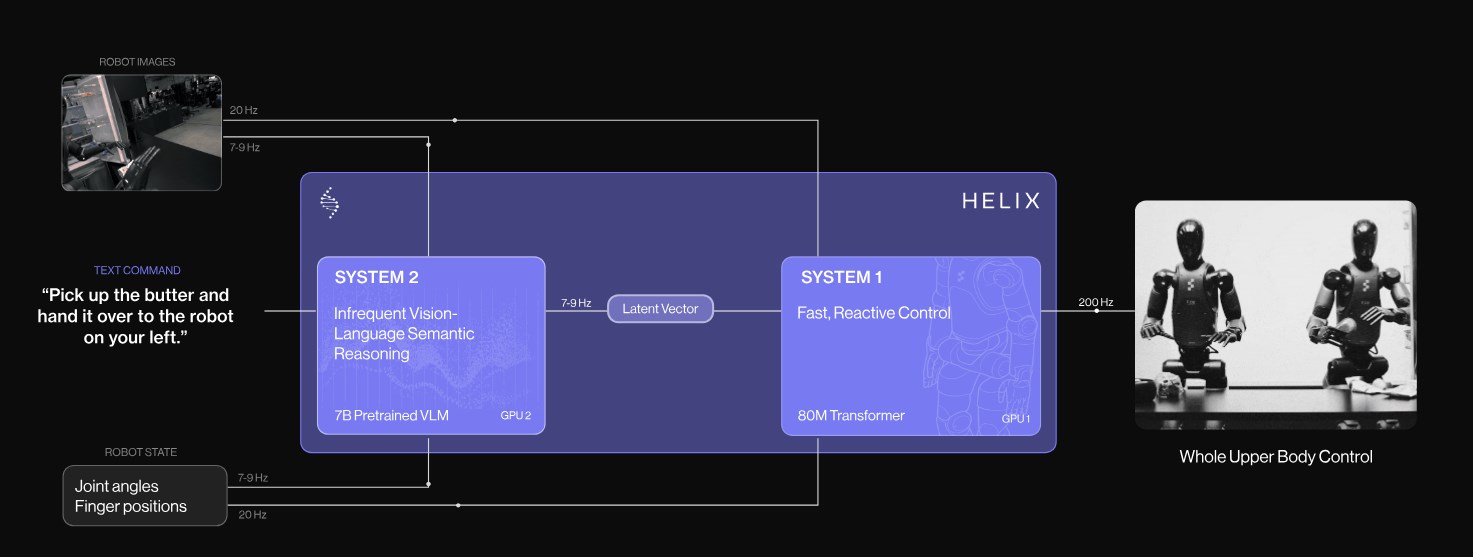 Brett Adcock, the founder and CEO of Figure AI, introduced Helix, a new machine learning model for humanoid robots. This statement came after Adcock announced two weeks ago that his company announced his decision to withdraw from OpenAI. Helix stands out as a Vision-Linguage-Action (VLA) model.
Brett Adcock, the founder and CEO of Figure AI, introduced Helix, a new machine learning model for humanoid robots. This statement came after Adcock announced two weeks ago that his company announced his decision to withdraw from OpenAI. Helix stands out as a Vision-Linguage-Action (VLA) model.Robot control in natural language
VLAs draw attention as a new phenomenon in the robotic world and have the ability to process information using visual and language commands. Helix works in a similar way; Combining visual data and language commands in real time controls the robot. “Helix, helix, has never been encountered in education never encountered in different shapes, size, color and material features of thousands of new household goods, by giving a command in a natural language shows the ability to receive,” he explains.
Helix’s potential is quite exciting: People will be able to tell their robots to do something simply and the robot will fulfill this request. According to Figure, Helix aims to fill the gap between visual and language processing. After receiving a natural language command, the robot visually evaluates its surroundings and then performs the task.
This is a revolutionary step with the simplest qualification. Figure gives the following scenario as examples: öz Give the robota cookie bag to the right ”or ç Place the cookie bag from the robot to the left and place it in the open drawer.” Both of these examples require a pair of robots to work together. Because Helix is designed to control two robots at the same time, and one robot helps the other while doing housework.
Figure exhibits Helix on a new generation of humanoid robot 02 and in home environments. Houses are known as a challenging area for robots, because they do not have a fixed structure like warehouses and factories.
Although a breaking point has been reached with Helix, the houses are still a complex and challenging area to test these robots. Educating robots, especially in places like kitchen, means comparing them with a wide range of tasks in different environments.
Already, Figure says, “In order for robots to be useful in homes, they will have to be able to produce smart behaviors especially on demand for objects they have never seen before,” he says.
What’s in the details of Helix?
Helix is described as the first VLA model that provides high continuous control of the entire humanoid upper body, including wrists, body, head and individual fingers. Heliix also cooperates with the robots simultaneously and performs complex tasks with objects that they have never faced before.
 Helix uses a single neural network to learn all behaviors. This approach allows robots to overcome difficulties in all mission, from taking and placing objects to use the drawers and refrigerators. Compared to other models, Helix can perform these operations without having to make fine task in any task. Helix himself is working on the buried GPUs.
Helix uses a single neural network to learn all behaviors. This approach allows robots to overcome difficulties in all mission, from taking and placing objects to use the drawers and refrigerators. Compared to other models, Helix can perform these operations without having to make fine task in any task. Helix himself is working on the buried GPUs.Helix also works with a dual architectural system as “System 1, System 2”. System 2 (S2) undertakes tasks of understanding and understanding of language. This helps robots make a wide generalization in many different objects and contexts. System 1 (S1) quickly transforms these semantic representations into robotic movements. Thus, the robot can instantly react to the surrounding changes.
I know it’s no longer impressed when watching humanoid robot videos, but now wonderful things are hidden in details. If you look at the video above, you can see that the robot running with Helix follows his hands with his head, and that he adjusts his body accordingly, and grip with his fingers. The robot controls multiple limbs at the same time. These were things that had not been of this sensitivity before. This sensitivity for a single job was also presented in old systems, but in different jobs, to do it in an unknown task … incredible.
Figure also states that robots can get any small household goods with a “AL” command. Systematic tests states that robots can function successfully from glassware and toys, tools and clothes without requiring any previous sample or special programming.
For example, with the command “take the desert items”, heliix not only recognizes a toy cactus that coincides with this abstract concept, but also gives the right engine commands to choose the nearest hand and safely grasp it.